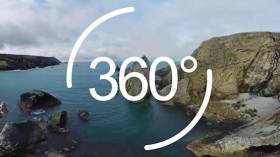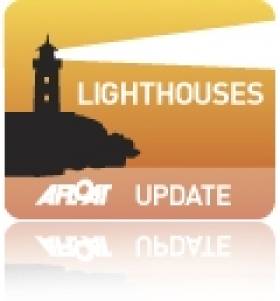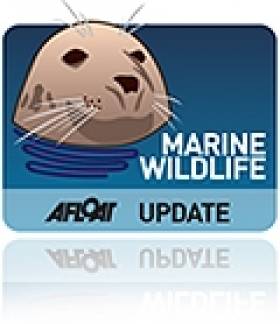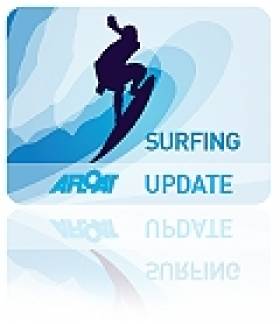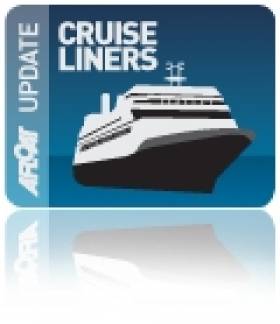Displaying items by tag: Wild Atlantic Way
Donegal Launches New Atlantic Coastal Trail
#CoastalNotes - Donegal's history and relationship with the coastline are celebrated by a new coastal trail launched earlier this month.
As the Donegal Democrat reports, a special training programme has been developed for business owners and others along the new Atlantic Coastal Trail to "teach the people of this county to be proud of the story of Donegal", in the words of Údarás na Gaeltachta's Meadbh Seoige.
The Gaeltacht authority is one of a number of partners in the initiative to promote the county's "maritime leisure and seafood experiences" as highlighted by Donegal Cathaoirleach Terence Slowey.
"We’re working on where we fall short in visitor numbers," explained Donegal County Council chief executive Seamus Neely. "One statistic is that as little as 12% of tourists who visit the Wild Atlantic Way actually travel north of Galway city."
The Donegal Democrat has much more on the story HERE.
Wild Atlantic Way Now Welcoming Virtual Visitors
#WildAtlanticWay - Virtual reality views of some of the top destinations and attractions along the Wild Atlantic Way are now online, showcasing Ireland like it's never been seen before.
As previously reported on Afloat.ie, the 360-degree virtual tours were launched by Fáilte Ireland at the ITB Berlin travel fair in March, and promised an immersive experience for users of new VR gadgets like the Samsung VR and Oculus Rift.
But anyone with a smartphone and an inexpensive attachment like Google Cardboard can also explore the full list of breathtaking activities that includes surfing beneath the Cliffs of Moher and sea stack climbing at Donegal's Slieve League, according to the Irish Examiner.
The virtual reality videos can even be viewed on any computer desktop – simply click and drag on the screen as the videos play to see the sights from all angles.
The 360-degree virtual tours launch comes as news emerges that only a fraction of potential visitors to Ireland are aware of the Wild Atlantic Way.
Just 7% of tourists surveyed by Fáilte Ireland new of the initiative promoting the attractions of Ireland's Atlantic coast, according to Galway Bay FM – with officials promising to improve this figure to 20% amid calls for more towns along the route, like Salthill in Galway, to highlight their place on the map.
Wild Atlantic Way Goes Virtual Reality
#WildAtlanticWay - Very soon potential visitors to Ireland will be able to see the Wild Atlantic Way like it's never been seen before – in virtual reality.
Independent.ie reports on the new Fáilte Ireland initiative, launched at the ITB Berlin travel fair earlier this week, to provide 360-degree virtual tours of some of Ireland's most breathtaking coastal sites.
Users of brand-new virtual reality gadgets like the Samsung VR and the Oculus Rift will be able to fully immerse themselves in attractions such as cycling across the wilds of the Burren, or surfing at the foot of the Cliffs of Moher.
But the experience won't be limited to early adopters of technology, as the VR video tours will also be available on YouTube for anyone with a computer to explore at the click of a mouse.
Independent.ie has more on the story HERE.
Galway City Councillors Adopt New Six-Year Tourism Blueprint
#Tourism - Galway's status as the only city on the Wild Atlantic Way is at the centre of a new six-year tourism blueprint for the City of the Tribes.
As the Connacht Tribune reports, the Tourism Sustainability Strategy 2015-2021 – developed from search commissioned by Galway City and County Councils – recommends that a 'master brand' be created to capitalise on the city's unique position in the West of Ireland.
Plans include developing and marketing Galway as a transport and accommodation hub for the Wild Atlantic Way, as well as creating new spin-off cultural and heritage trails, and extending the tourist season with the likes of new city-based festivals.
The Connect Tribune has much more on the story HERE.
Travel YouTubers Make Waves Along Ireland's Wild Atlantic Way
#WildAtlanticWay - Popular travel YouTube duo the Vagabrothers have been posting clips from their current trip along Ireland's Wild Atlantic Way - including a "super relaxing" kayaking adventure off West Cork.
As TheCork.ie reports, Californian brothers and self-professed vagabonds Marko and Alex Ayling paddled in the company of Atlantic Sea Kayaking's Jim and Maria Kennedy as part of their extensive tour of the country at the invitation of Tourism Ireland.
Once back on shore, the Aylings were treated to a surprising seaweed lunch at the Union Hall café run by the Kennedy's own daughter.
The video above is just one of a series that's taken the brothers surfing in Strandhill, cliff-jumping in the Aran Islands and tucking into an oyster feast in Co Galway.
And it comes as Lonely Planet recommends the Wild Atlantic Way as the world's best offbeat coastal road trip, according to Galway Bay FM.
The whole of the Vagabrothers' Irish adventure so far can be found on YouTube HERE.
#LighthouseGrant - A grant of €299,000 was announced by Minister of State for Tourism, Michael Ring TD last week via the Fáilte Ireland Capital Programme, to the Commissioners of Irish Lights.
The grant is to develop a new visitor facility building on a site adjacent to Fanad Head Lighthouse. The project will incorporate a new car park as well as facilities for visitors, a ticket desk and an interpretation area.
Fanad Head Lighthouse is located in Co. Donegal on the eastern shores of the Fanad peninsula in an area recognised for its scenery and has been designated a Signature Discovery Point within Fáilte Ireland's Wild Atlantic Way initiative.
The Minister Ring commented: 'While recent technology advances mean that much of the old physical infrastructure at lighthouse stations is no longer required for core operations, the Commissioners of Irish Lights is to be commended for recognising that these properties are of important heritage value and preserving them as a tourism asset. Today's grant will allow Fanad Lighthouse to fully play its natural part as a truly spectacular stop along the Wild Atlantic Way'.
"The lighthouse itself is due to open to visitors this summer and will offer a unique visitor experience as well as provide an insight into the role of lighthouses in Ireland's past, as well as the lighthouse keeper's way of life. Visitors will have access to the top of the lighthouse with unsurpassed views of the Atlantic and the surrounding coastline. It will be a great asset to the region."
Fáilte Ireland CEO Shaun Quinn emphasised: 'We are more than happy to invest in this project and we believe that it will significantly build on the experience for visitors to this part of Donegal. The project is a perfect fit for the Wild Atlantic Way, which continues to develop and evolve, and an attraction such as Fanad resonates very much with both the 'culturally curious' and 'great escapers' – those overseas market segments to which the Wild Atlantic Way particularly appeals'
The nvestment follows a recent €500,000 refurbishment of Fanad Lighthouse by the Commissioners of Irish Lights, who have also redeveloped the former lighthouse keepers' houses into three self-catering units.
In addition, the Commissioners recently launched a new initiative entitled the Great Lighthouses of Ireland partnership. This initiative will bring together 12 lighthouses in Ireland and Northern Ireland and includes the marketing, preservation and conservation of our important maritime and lighthouse heritage.
The partnership was created to deliver an experience that is motivating and inspiring and fully leverages the Wild Atlantic Way's potential.
'Shark Park' Could Be Big Draw For Wild Atlantic Way
#MarineWildlife - Ireland's basking shark visitors could be a big money-spinner for the Wild Atlantic Way, as Independent.ie's Travel TV reports.
The second largest fish in the sea are a regular summer sight off Ireland's coasts, particularly in Donegal, Mayo and Kerry – all prime spots along the western coastal tourism route initiative.
Indeed, Ireland is one of the best places in the world to see these magnificent examples of marine wildlife, says Emmett Johnston of the Irish Basking Shark Study Group.
And according to Dr Pete 'Hammerhead' Klimley, sites like Malin Head could be perfect as 'shark park' reserves to protect a species that may only number a few thousand worldwide, despite recently placing third in a list of the most unusual sharks.
Certainly such a shark park reserve would afford protections to help avoid the shocking harassment of marine life exhibited by two louts videoed 'surfing' a whale shark recently.
According to the Irish Mirror, calls have been made for the men involved in the sickening stunt to be charged for their abuse of the gentle giant, the largest fish in the world's oceans.
20% Boost for Shannon Ferry Crossings on Wild Atlantic Way
#BusyFerries – The Shannon Breeze and Shannon Dolphin operated by the Shannon Ferry Group has already had to extend its high-season crossings due to demand, writes The Examiner
The ferries which can take almost 120 cars between them, run between Tarbert, Co Kerry and Killimer in Clare from 7am to 9.30pm with crossings every 15 minutes.
Eugene Maher, chief executive of Shannon Ferry Group said: "Numbers have been fantastic, particularly over the past two years and this can be attributed to the promotion of the Wild Atlantic Way. "We had lost our focus in terms of promoting the west of Ireland and the Ireland outside of Dublin. As the capital city, Dublin is a dominant player and will continue as that. But the traditional Ireland around the country seemed to have disappeared as regard tourism numbers.
For more on this, the newspaper has the story here.
Strandhill Tops Surfing Spots On Wild Atlantic Way
#Surfing - Strandhill in Co Sligo is the number one spot for surfing in Ireland, according to a new celebration of the best towns to catch waves along the Wild Atlantic Way.
In the words of SurfHolidays.com, the small village just six kilometres from Sligo town "is an eclectic mix of surfers, locals and travellers who have now made [it] their home. If you’re looking for a surf trip in Ireland you have found the perfect spot."
It also helps that it's not far from the northwest surfing mecca of Bundoran – which features third on this selection – not to mention the fearsome big waves off Mullaghmore Head.
Running a close second on the list is Lahinch in Co Clare, which splits the difference between the challenging Aileens big wave spot off the coast to the surf at the beach itself, which is "perfect for beginners".
Further north, just to the east of the Wild Atlantic Way's starting point, the quality surfing at Portrush gets a shout-out, as does the "mythical" wave of Inch reef near Ballybunion in Co Clare.
SurfHolidays.com has more on the story HERE.
#ExploringDonegal - National Geographic Explorer visited Killybegs Harbour yesterday following a voyage along the western seaboard with anchorage calls off Aran Islands and Dingle Peninsula as previously reported here on Afloat, writes Jehan Ashmore.
The call of Lindblad Expeditions /National Geographic's operated 150-passenger cruiseship to Killybegs is the second arrival this season which was opened last week by Le Boreal with a 254 passenger capacity.
A sister of the Companie du Ponant's chic 'boutique' style mega-yacht like vessel, Le Soleal is the next caller due on 24 May. In total 9 cruiseships are scheduled in 2015, surpassing last year itself a record.
More than 6,300 passengers are to visit the town and along this stretch of the Wild Atlantic Way. The main attraction of nearby Slieve League, one of the highest sea cliffs in Europe that are 601m (1,972 ft) high above the Atlantic Ocean.
Of the P&O Cruises to visit the north-west, they will be made by the 30,000 tonnes Adonia, with a length of 180.45m (592 ft) and the largest cruiseship to Killybegs in 2015 goes to the 69,000 tonnes Oriana with a length of 260.00m (853.02 ft).
Adonia has a capacity for 710 passengers while Oriana is much greater with 1,822 passengers and a crew of almost 800.


